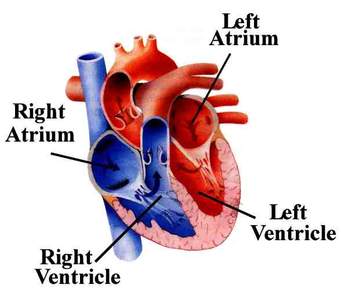 Aerobic exercise (often aka Aerobic Cardio) is much disparaged these days, but it is not entirely useless as one component of fitness. It's roughly defined as exercises that keep one's heart rate elevated significantly for extended lengths of time (ie 20 minutes plus, but around 20 is enough for the benefits), and physiologically defined as exercises in which oxygen supply can keep up with metabolic demand. Thus jogging, running, swimming, rowing, biking etc. Eventual fatigue in these exertions has to do with depletion of muscle glycogen supplies or plain muscular inadequacy.
Aerobic exercise (often aka Aerobic Cardio) is much disparaged these days, but it is not entirely useless as one component of fitness. It's roughly defined as exercises that keep one's heart rate elevated significantly for extended lengths of time (ie 20 minutes plus, but around 20 is enough for the benefits), and physiologically defined as exercises in which oxygen supply can keep up with metabolic demand. Thus jogging, running, swimming, rowing, biking etc. Eventual fatigue in these exertions has to do with depletion of muscle glycogen supplies or plain muscular inadequacy.
Heart rates for a beneficial cardio workout vary by age and fitness, but a rule of thumb is that if you can converse, you aren't doing anything; if you can get a few sentences out you're about right; and if you can barely speak you are probably over your limit or in a sprint.
What Happens to Your Heart Rate When You Exercise?
Cardio is not very useful for fat loss or strength-building but it's good for maintaining or building endurance, bone fitness, and cardiac fitness. Better than sitting or walking, for sure. If you can bike 50 miles at any speed, that is great because most people can't.
As an aside, reader Mike reminds us that excess cardio can lead to muscle loss. True, but really only if you are in good shape with little fat.
Anaerobic cardio exercises are those which exceed the ability of oxygen metabolic pathways to keep up with the muscular demands, eg sprinting, weight-lifting (yes, resistance exercises do stress the heart), and other high-intensity exercises like calisthenics. Anaerobic exertions build up lactic acid in muscle, hence the burn - but burn has nothing directly to do with any benefit other than maybe encouraging muscles to increase their glycogen storage. Almost any aerobic exercise can be made anaerobic by increasing intensity. This can not be sustained for very long, at most a couple or a few minutes. Cellular machinery cannot keep up with the demand.
Any exercise that leaves you limp, gasping, or burning pain after a brief time has probably become anaerobic. Good stuff, and more likely to be building rather than maintaining. This is why, for the Cardio piece of the Conditioning Triad, we recommend interval cardio (HIIT) for efficiency instead of endless aerobic cardio. The sprints will get your heart rate way up but only for a brief (30-60 seconds) while.
Efficient cardio exercise requires strength which can mainly be built by resistance exercise and then applied to cardio. For cardiac conditioning, most people recommend a combination of resistance exercise and HIIT. Settled science? The American Heart Association recommends strength training at least twice per week.
Men seem to have an innate preference for anaerobic exercise, women for aerobic. That's statistical only and I have no idea what relevance it has to anything.
The physiology of aerobic and anaerobic cellular metabolism is interesting, and miraculous. Minimal Bio education needed to understand it.
Not necessarily a recommendation, but for "cardio" I do two approx 20 min sets of HIIT per week and about a total of 80 mins of calisthenics each week. (Plus my 2 hrs of weights.) Feels like a good balance.


 Aerobic exercise (often aka Aerobic Cardio) is much disparaged these days, but it is not entirely useless as one component of fitness. It's roughly defined as exercises that keep one's heart rate elevated significantly for extended lengths of time (ie 20 minutes plus, but around 20 is enough for the benefits), and physiologically defined as exercises in which oxygen supply can keep up with metabolic demand. Thus jogging, running, swimming, rowing, biking etc. Eventual fatigue in these exertions has to do with depletion of muscle glycogen supplies or plain muscular inadequacy.
Aerobic exercise (often aka Aerobic Cardio) is much disparaged these days, but it is not entirely useless as one component of fitness. It's roughly defined as exercises that keep one's heart rate elevated significantly for extended lengths of time (ie 20 minutes plus, but around 20 is enough for the benefits), and physiologically defined as exercises in which oxygen supply can keep up with metabolic demand. Thus jogging, running, swimming, rowing, biking etc. Eventual fatigue in these exertions has to do with depletion of muscle glycogen supplies or plain muscular inadequacy.